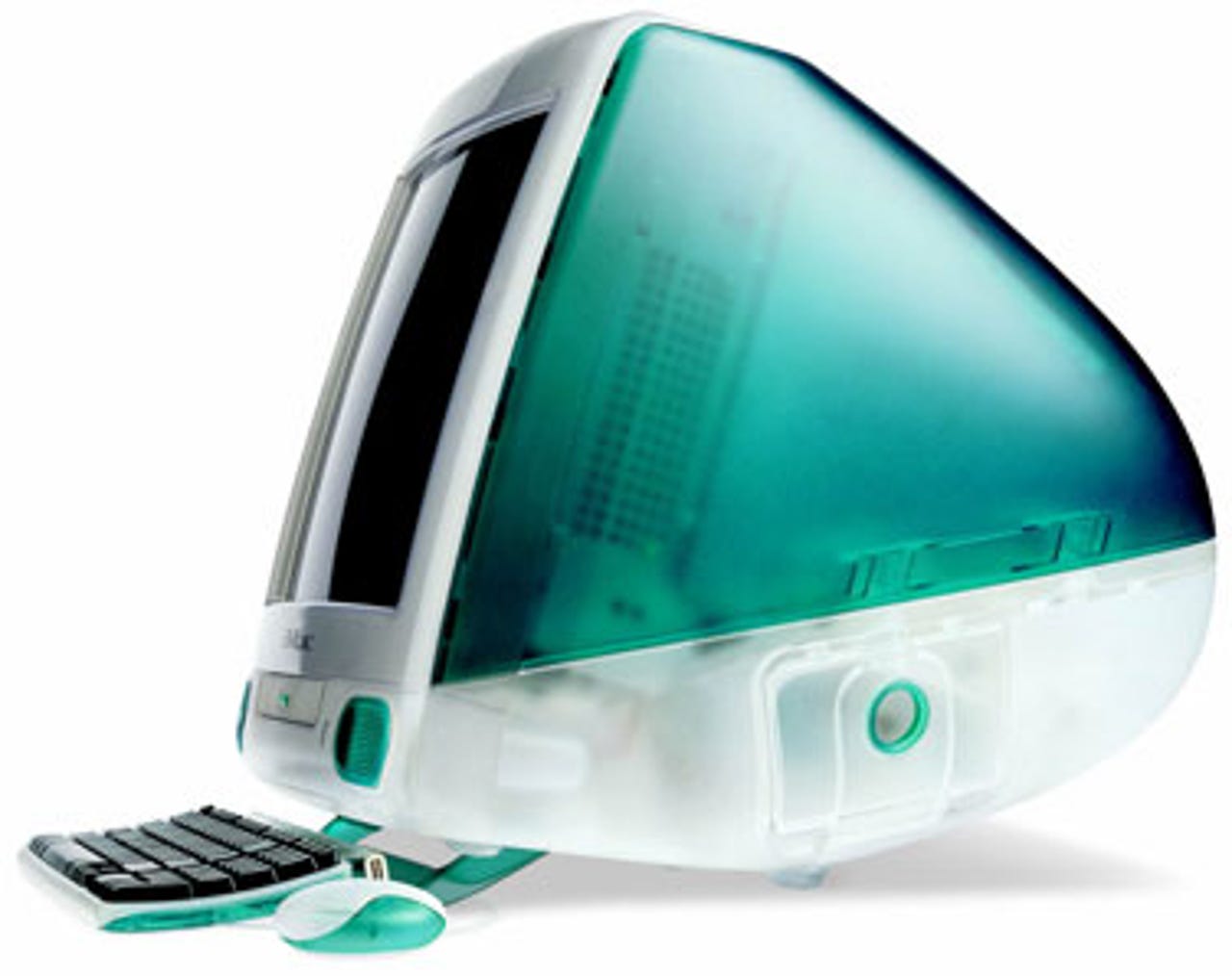When the floppy disk was king


Twenty years ago, the iMac marked a major transition in terms of PC staples. Its adoption of USB heralded the ascent of the now ubiquitous standard. But its absence of a floppy drive marked the beginning of the end for a once universal file storage medium. Even today, inexpensive USB floppy drives can create a bridge back to the '80s, but the small plastic squares once inhabited a broader world of products.
DaynaFile
Before the iMac, the implementation of the floppy drive had been a point of pride for Mac users. Not only was the original Macintosh the first computer to use a 3.5" floppy drive, but -- unlike the drives in a PC -- it could eject its floppies without manual intervention. Alas, Mac users still had to live in a PC world and couldn't wait until those computers also adopted the 3.5" drive. Enter the DaynaFile, a SCSI device that allowed Macs to read and write to 5.25" PC-formatted floppy disks. Originally available with two bays, the DaynaFile II that succeeded it had one drive bay and a lower profile.
Mavica digital cameras
Perhaps the most successful non-PC products to use floppy drives were the Mavica line of early digital cameras from Sony, which had invented the 3.5" floppy disk. The appeal was simple. By recording photos to a floppy disk, you could easily bring them to a PC where they could be edited, printed, and perhaps e-mailed via America Online. Nowadays, a typical RAW image, to say nothing of HD video, would overwhelm a floppy's capacity, But when the photos were coming in at 0.3 megapixels, a floppy was fine and a lot cheaper than getting film developed. If it got filled up, you could always pop in another.
SmartMedia
As digital cameras got smaller, several memory card formats vied to become a standard for interchange. One of these was SmartMedia, a card type backed by Olympus and Fujifilm. When compared to Compact Flash cards, SmartMedia was very thin. It was thin enough, in fact, to fit inside a floppy disk enclosure called FlashPath that could trick the computer reading it to think it was reading an actual floppy disk. SmartMedia gave way to the xD card format, but higher capacities couldn't save it. SD cards and ultimately microSD cards emerged victorious in the memory card format wars.
TV Photo Viewer
The Mavica might have made it easy to transfer photos to your Mac or PC, but what about the television? In an era long before the Chromecast and AirPlay, Microsoft proposed a bridge between the PC and television with the generic name of TV Photo Viewer. Created for use with with low-resolution standard definition TVs, the device came with software that reduced photos to VGA resolution to maximize the number that could fit on a floppy.
The TV Photo Viewer wasn't the only such product to use removable media as a means to show photos on the television. Iomega's FotoShow used the company's Zip drives in a similar fashion but could offer almost ten times the number of photos per disk. But the TV Photo Viewer came to market as floppies were heading to that great recycling bin in the sky.
The Roland MC-500
Companies were not content with using the floppy disk as a way to transfer pictures. It also played a role in music creation and not just as a mutated orchestra member. The Roland MC-500 was a standalone synthesizer that could accommodate four tracks, double that with the use of software. It featured one MIDI input and two MIDI outputs and could store 100,000 notes on a floppy disk. But to get a sense of what it was like, a video is worth a thousand notes.
Synthesizers from Korg, Yamaha and Casio
If you preferred to save and load MIDI files with the keys of a musical keyboard instead of the calculator-like buttons of the MC-500, synthesizers from Korg, Yamaha and Casio were all ready to share the music with floppy drives. Eventually, as with everywhere else, these gave way to USB ports, but owners of these older keyboards weren't completely left in the lurch. Various companies developed floppy drive emulators that tricked the host device into thinking a USB flash drive was simply a collection of many floppy disks.
Word processors
As a typewriter company, your product may have been good enough for Hemingway, but sometimes it's more convenient to edit on a larger screen or format using page layout capabilities far beyond those of any standalone word processor. You can show the world you're down with this digital whatever by sticking a floppy drive onto your product as Brother, Panasonic and other companies did.
Brother in particular would go on to produce a floppy-equipped word processing clamshell called the SuperNote that ditched the printing capability. And it took the productivity appliance about as far as it could go with the GeoBook, a laptop-like device that ran the GEOS graphical environment atop DOS; it also included a floppy drive for infinite storage and file interchange with PCs. Ultimately, though, the better value proposition of Windows-based laptops left it no market.
Video games
Floppy disks showed up in digital cameras and musical keyboards. But how about video games? Actually, they showed up fairly early in this accessory for the Nintendo Famicom, the Japanese counterpart of the NES, at a time when Nintendo and Sony had a much friendlier relationship. The drive was part of an elaborate system that created an alternative to cartridges. According to Nintendo Life, Famicom owners could go to a store where a kiosk would write a videogame title such as The Legend of Zelda -- which appeared on disk before cartridge -- onto a floppy to play back at home.
Owning the game on disk had a few advantages, too, such as easier saving of games in progress and the ability to "trade in" a title, which consisted of having the kiosk overwrite an existing game with a new one. Best of all, the kiosk featured Mario and Luigi chipping in to write bits onto your media. Of course, while the physical media was the same, you couldn't run a Nintendo game on Apple hardware -- at least not for another few decades.
The end
With their capacity limited to less than two megabytes, floppy disks ultimately began struggling to keep up with larger files. Iomega's Zip drive became a popular alternative for a few years, but Zip disks were incompatible with the floppy form factor. The last hurrah for the floppy was Imation's SuperDisk, which stored 120 megabytes (20 percent more than the original Zip disk) on a disk that had the dimensions and look of a floppy disk. Of course, this bit of magic required purchasing a new SuperDisk drive, but at least it could read and write standard floppies. While it worked well, the SuperDisk never achieved the kind of ubiquity that the floppy had at its peak, and became yet another resident of the removable media graveyard along with its competitors.